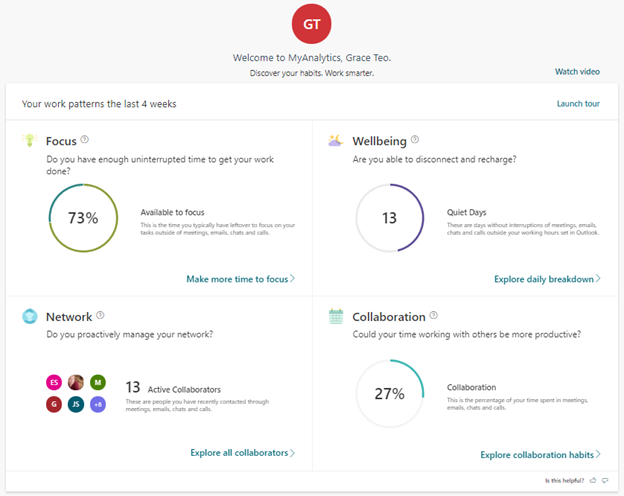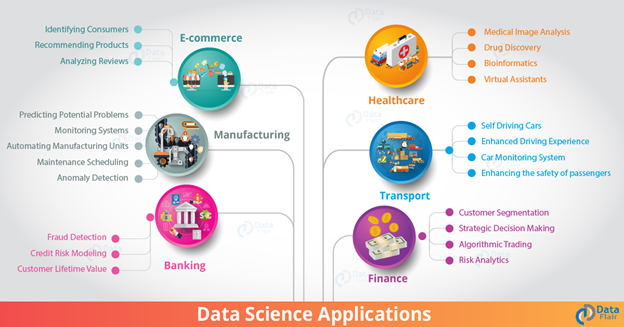 Dr. Grace Teo, Sr. Research Psychologist Dr. Grace Teo, Sr. Research Psychologist Although no one from the office directly observed me doing work during the COVID quarantine, someone else was keeping watch. They noted and reported back to me how much time I spent in “deep focus”, on emails and online chats, meeting duration and if these meetings were accompanied by agendas, who my collaborators were, and my level of well-being (i.e., the time I actually “powered down” from work). Yes, Microsoft’s MyAnalytics (see Fig. 1) was my productivity pal while I worked from home. I indulged myself in this new distraction, reading my stats and delving into the research and insights, discovering things like “it can take up to 23 minutes to refocus after checking just one email or chat”, “having long blocks of time to focus without interruptions can help you get challenging work done faster”, and “last-minute invitations are sometimes necessary, but your meetings may be more effective if you give attendees sufficient time to prepare”. Applications of data science methods are becoming prevalent in more and more domains of our work and life. Microsoft’s MyAnalytics is just one of many applications (see Fig. 2) that we encounter, whether we know it or not. A 2018 Forbes article provided a quick overview of some data science tools, which include: (i) data analytics, (ii) predictive modeling, (iii) artificial intelligence and machine learning (Forbes, 2018). As it turns out, these tools closely mirror much of what we do in our everyday interactions with others.
Data analytics merely involves examining and describing past data, such as past usage and activities. There is no prediction or extrapolation done with the data, as is the current state of MyAnalytics. Human analogy: We perform data analytics when we take a matter-of-fact approach in noting someone’s past behaviors, like when someone was late for all of the Thursday meetings in the past month. We do not use it to infer anything about their patterns of behavior or personality, and do not try to project their future actions. Predictive analytics takes things a step further. This involves using past data to derive some general pattern or model, which is then used to predict future events. Regression is a common statistical technique for developing such models from past or observed data. Human analogy: We perform predictive analytics to make sense of the world through patterns. For instance, when we see someone being late for a particular Thursday meeting more than a few times, we start to expect/predict that this person will be late for future meetings. In doing this, we create a “model” of the person’s behavior for meetings. Artificial Intelligence and Machine Learning (AI/ML) goes even further. In addition to using past data to predict future events, AI/ML involves autonomously learning and adjusting the model without any human intervention as new data comes in. This is what enables Facebook to get better at recognizing your friends by continually learning their unique features from each new picture of them in various poses and lighting conditions. Human analogy: This type of learning comes closest to what humans actually do with new information. Our understanding and predictions about someone get better the more we see him/her in various contexts and roles. Our knowledge of this person gets richer with each new encounter. For instance, after seeing the same person in other meetings on Thursday, non-work meetings, and meetings with other customers, we realize that s/he is only late for the Thursday meetings that occur with a particular customer. So what do you think of apps such as MyAnalytics? Do you think it would help your productivity? What aspects of your life would you not welcome the use of such apps? Leave a comment and tell us what you think!
0 Comments
Your comment will be posted after it is approved.
Leave a Reply. |
AuthorsThese posts are written or shared by QIC team members. We find this stuff interesting, exciting, and totally awesome! We hope you do too! Categories
All
Archives
June 2024
|



 RSS Feed
RSS Feed